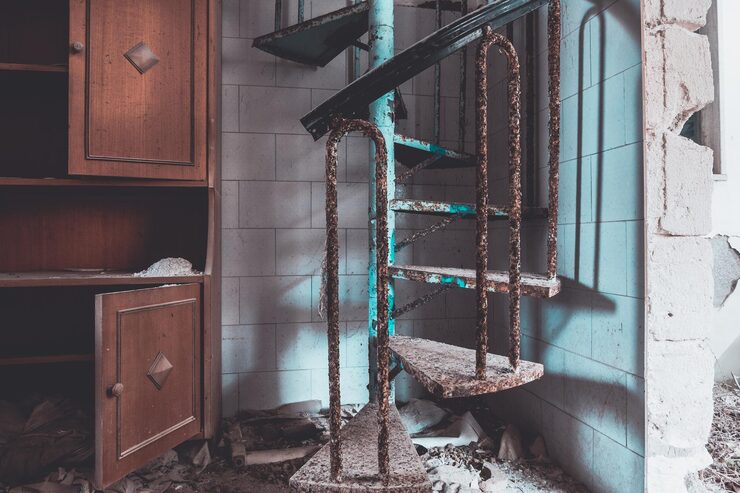Water Damage Restoration Explained: Information, Fundamentals, and Essential Suggestions
Water damage restoration refers to the process of cleaning, drying, and repairing areas affected by water intrusion. This may result from natural disasters, plumbing failures, leaks, or flooding. Restoration exists to prevent further structural damage, health hazards, and long-term deterioration of properties.
The process involves identifying the source of water, removing excess moisture, cleaning affected areas, and restoring damaged materials to a safe and functional state. It plays a crucial role in preserving property integrity, maintaining hygiene, and protecting the health of occupants.

Why water damage restoration matters today and who it affects
Water-related damages are increasingly common due to urban flooding, aging infrastructure, and extreme weather events. Restoration is important for several reasons:
-
Health protection: Standing water can promote mold, bacteria, and other pathogens.
-
Property preservation: Timely restoration reduces structural damage to walls, floors, and foundations.
-
Financial mitigation: Prevents further costs from deterioration or prolonged repairs.
-
Safety: Minimizes risks of slip hazards, electrical issues, and weakened structures.
-
Environmental impact: Proper restoration ensures water is managed safely without contaminating surrounding areas.
Individuals, families, property managers, and business owners are all affected, making knowledge of water damage restoration essential for anyone responsible for maintaining buildings.
Recent updates and trends in water damage restoration (2024–2025)
The field of water damage restoration continues to evolve, with technological advancements and process improvements improving efficiency and outcomes:
| Trend or Update | Description |
|---|---|
| Advanced drying equipment | Use of industrial-grade dehumidifiers and air movers for faster and more efficient drying. |
| Moisture detection technology | Infrared cameras, hygrometers, and sensors detect hidden water and monitor drying progress. |
| Mold prevention protocols | Focus on antimicrobial treatments to prevent mold growth after water exposure. |
| Green restoration practices | Use of eco-friendly cleaning agents and sustainable disposal of damaged materials. |
| Insurance and claims integration | Improved coordination between restoration providers and insurance documentation to streamline claims. |
| Remote monitoring systems | IoT sensors and digital tracking allow real-time updates on drying and restoration progress. |
| Emergency preparedness | Increased awareness and adoption of proactive flood or water intrusion prevention measures. |
These trends highlight the integration of technology, sustainability, and efficiency in water damage restoration.
How laws, regulations, and government programs affect water damage restoration
Restoration practices are influenced by safety, environmental, and construction regulations:
-
Building codes: Local regulations may dictate standards for structural repair after water damage.
-
Environmental rules: Disposal of contaminated water or materials must follow guidelines to prevent pollution.
-
Health and safety standards: Proper use of protective equipment, ventilation, and sanitation is required to prevent exposure to mold and pathogens.
-
Insurance and documentation regulations: Restoration efforts often need to align with insurance requirements for claims processing.
-
Emergency response programs: Government agencies may provide frameworks for flood recovery and disaster response, guiding how restoration is conducted in large-scale incidents.
These regulations ensure that restoration is safe, effective, and environmentally responsible.
Helpful tools and resources for water damage restoration
Various tools and resources are valuable for understanding and managing water damage restoration:
-
Moisture meters: Measure water content in walls, floors, and ceilings.
-
Infrared cameras: Detect hidden water and monitor drying progress.
-
Industrial air movers and dehumidifiers: Accelerate drying while minimizing secondary damage.
-
Restoration software: Tracks progress, generates reports, and coordinates documentation for insurance purposes.
-
Guidelines and checklists: Standard operating procedures for cleanup, mold prevention, and structural repair.
-
Educational resources: Online tutorials, courses, and handbooks for property managers and homeowners.
These resources help ensure that restoration is done efficiently, safely, and according to professional standards.
Frequently asked questions
What is the first step in water damage restoration?
The first step is to identify and stop the source of water. This prevents further damage and sets the stage for drying and cleanup.
How long does water damage restoration take?
The duration depends on the severity of the damage. Minor leaks may take a day or two, while significant flooding or structural damage can require several weeks.
Can water damage lead to mold growth?
Yes. Moisture that remains after flooding or leaks can cause mold within 24–48 hours. Timely restoration and drying are critical to prevent it.
Is professional restoration necessary?
While small leaks may be managed by homeowners, professional restoration ensures thorough drying, mold prevention, and structural safety, especially for significant or hidden damage.
What precautions are important during restoration?
Key precautions include wearing protective gear, isolating electrical systems, removing contaminated materials safely, and monitoring moisture levels to prevent future issues.
Conclusion
Water damage restoration is a crucial practice that combines safety, technology, and environmental responsibility. It protects health, preserves property, and mitigates long-term damage caused by water intrusion.
Recent trends such as advanced drying technologies, moisture monitoring, and eco-friendly restoration methods are making the process faster and more sustainable. Government regulations and building codes ensure that restoration is done safely and in line with environmental standards.
With proper tools, resources, and knowledge, homeowners, property managers, and institutions can respond effectively to water damage, minimizing risk and maintaining safe, functional spaces.